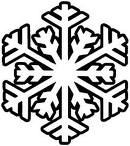I’ve often get questions about winter effects on insect pests. A harsh winter can greatly affect population levels of some insects during the next cropping season. Cold weather can have major impacts on some insect pests. Having a more temperate environment is why Midwestern states typically do not have as many insect pests in their crops. Classic examples are boll weevil, southern green stink bug and southwestern corn borer. Of course, boll weevils have been eradicated from Tennessee. We rarely have problems with southern green stink bugs because this species is sensitive to winter kill. When we do see infestations, it is usually late season. Southwestern corn borer usually manages to make it through Tennessee winters, but we are on the northern edge of their range, so we sometimes see lower populations following a cold winter.
The bad news is that many native pests are well equipped to handle our winters. Tarnished plant bugs, European corn borers, corn rootworms, spider mites and soybean aphids are examples of cold hardy pests. However, a cold winter or late spring can slow down insect development, often because other host plants may not be as available for them to get a “jump start”. During a warm or early spring, some pests may build up relatively high populations on other hosts before the cropping season kicks off in earnest (e.g., tarnished plant bugs). Most of our aphids in wheat can handle cold winter, but to the south, populations may actually build during the winter; whereas, they usually don’t in Tennessee.
There are also a number of pests that don’t overwinter in Tennessee but invade from southern geographies every year. Thus, the harshness of our local winter does not directly impact the insect populations observed in Tennessee. Examples include soybean loopers, fall armyworm and beet armyworm. I’ve include a table below of how weather would typically impact populations of some common insect pests in row crops. Always keep in mind that insect populations can build rapidly, even if starting low, because they have a high ability to reproduce when conditions are favorable.
| Insect Pest Species | Impact of a Harsh Winter (by Tennessee Standards) on Overwintering Survival |
| Boll Weevil | Moderate – High (but eradicated) |
| Soybean Aphids | Low (widely distributed in the North)* |
| Cotton Aphid | Low* |
| Corn Earworm | Low – Moderate* |
| Tobacco Budworm | Low – Moderate |
| Green and Brown Stink Bug | Low – Moderate |
| Southern Green Stink Bug | High |
| Threecornered alfalfa hopper | Moderate – High |
| Green Cloverworm | Low (widely distributed in the North) |
| Southwestern Corn Borer | Moderate – High |
| European Corn Borer | Low (widely distributed in the North) |
| Tarnished Plant Bug | Low (widely distributed in the North) |
| Cabbage Loopers | Low (widely distributed in the North) |
| Soybean Loopers | Low* |
| Fall and Beet Armyworm | Low* |
| Yellowstriped Armyworm | Low (widely distributed in the North) |
| Spider mites | Low (widely distributed in the North)* |
| Japanese Beetle | Low (widely distributed in the North) |
| Sugarcane Beetle | Low – Moderate |
| Grasshoppers (most species) | Low |
| Black Cutworm | Low* |
| Western Corn Rootworm | Low (widely distributed in the North) |
| Southern Corn Rootworm or Spotted Cucumber Beetle | Low |
* These pests are highly migratory.


